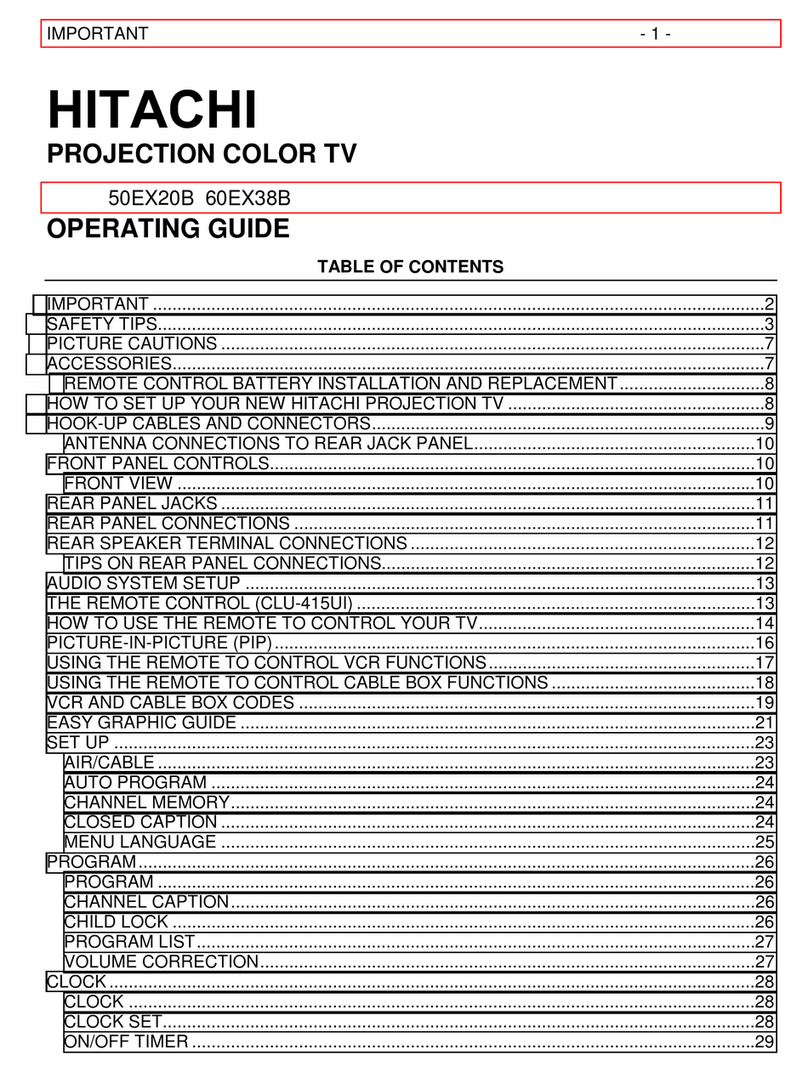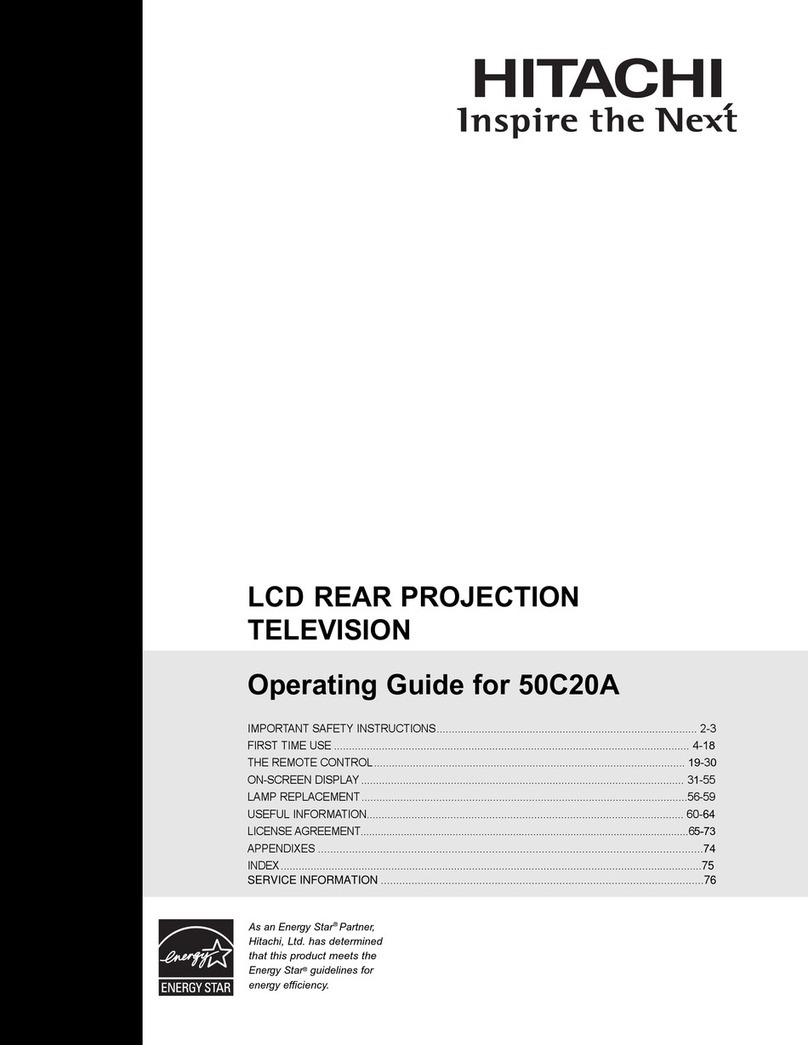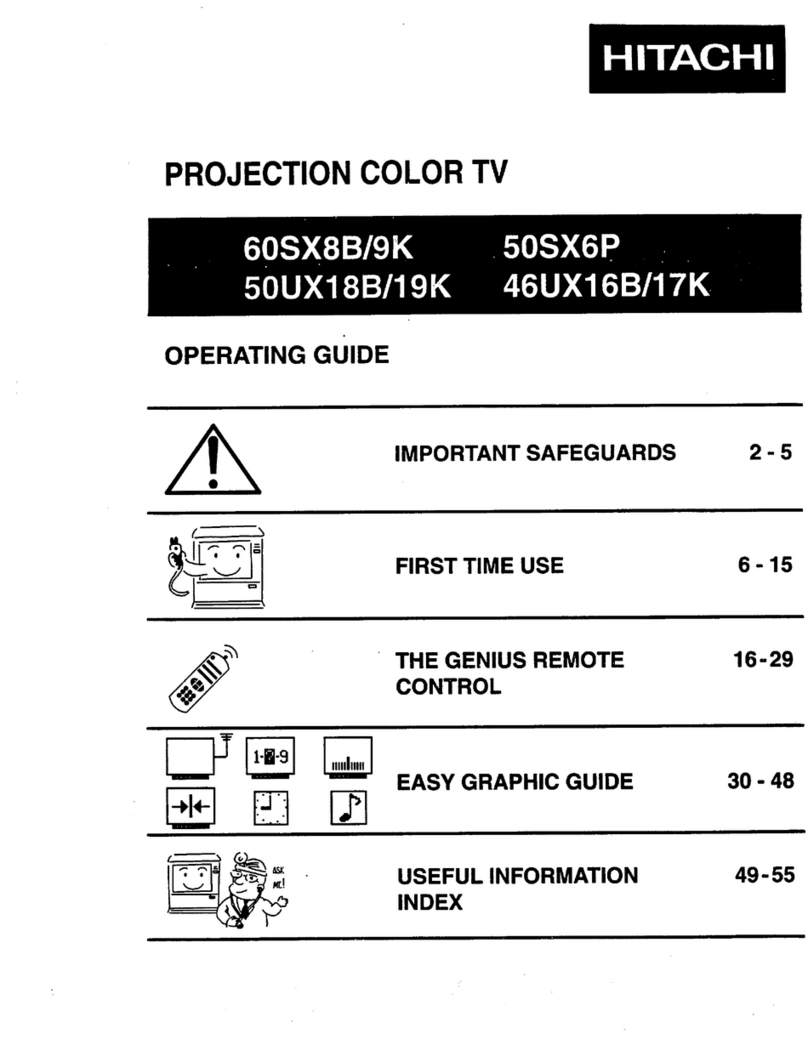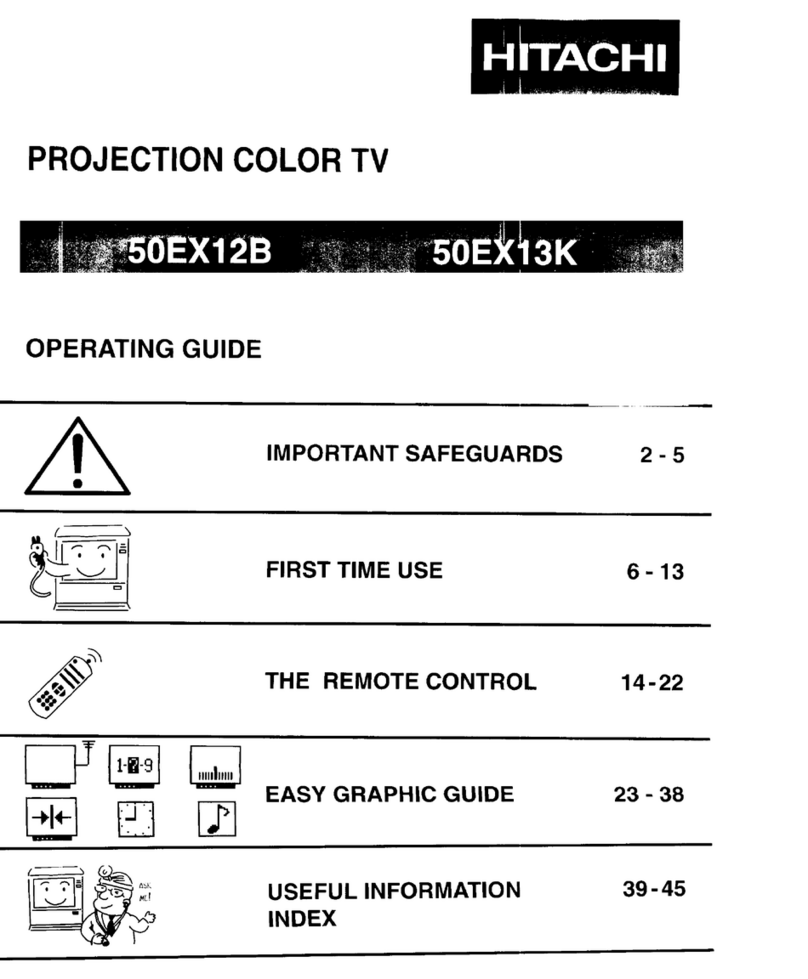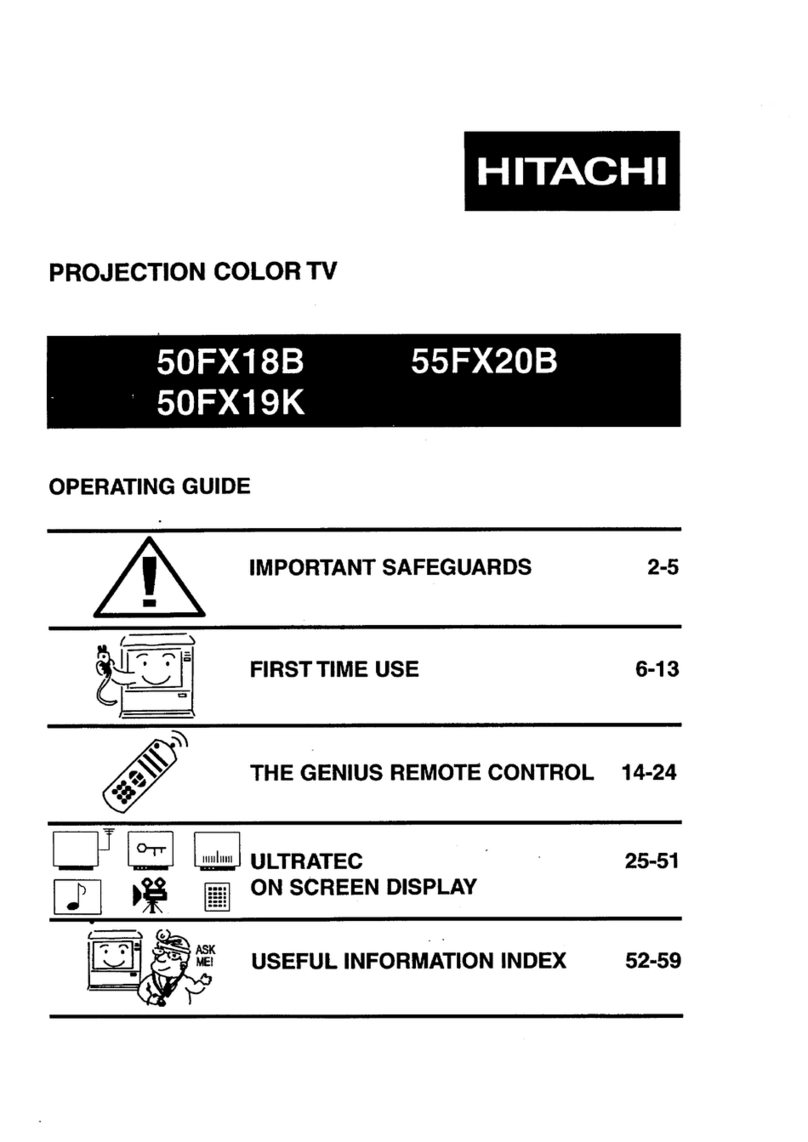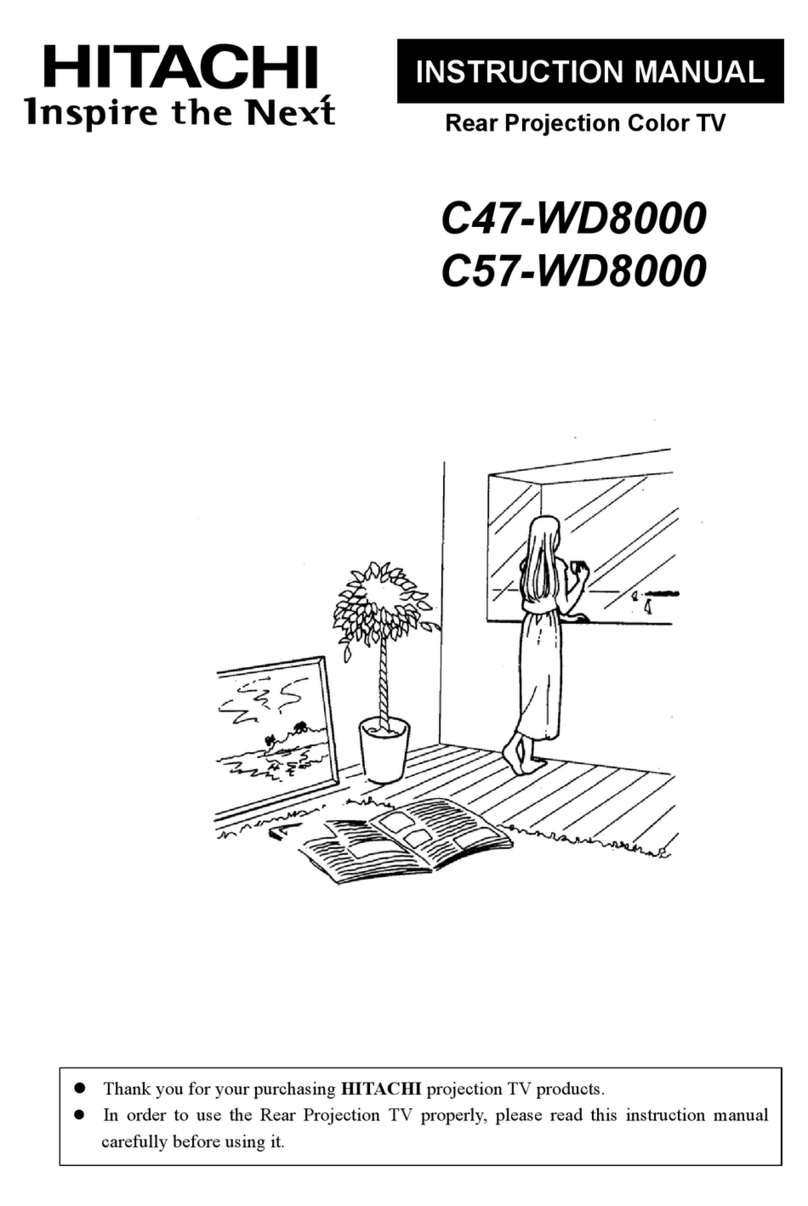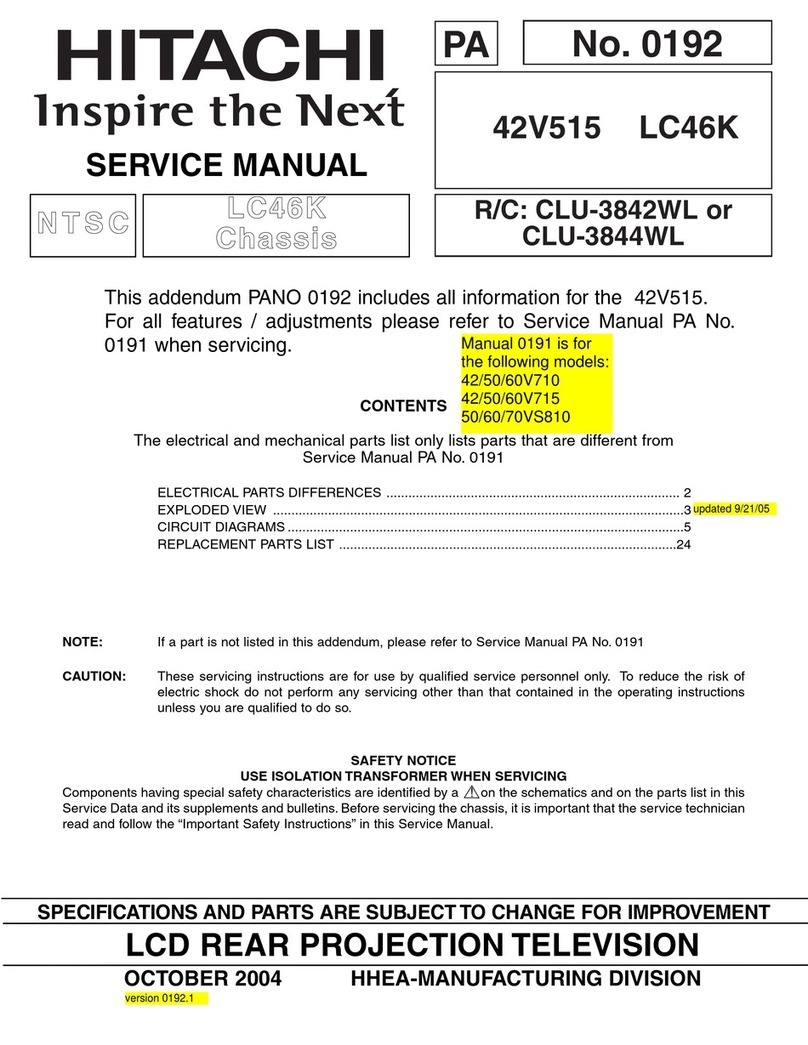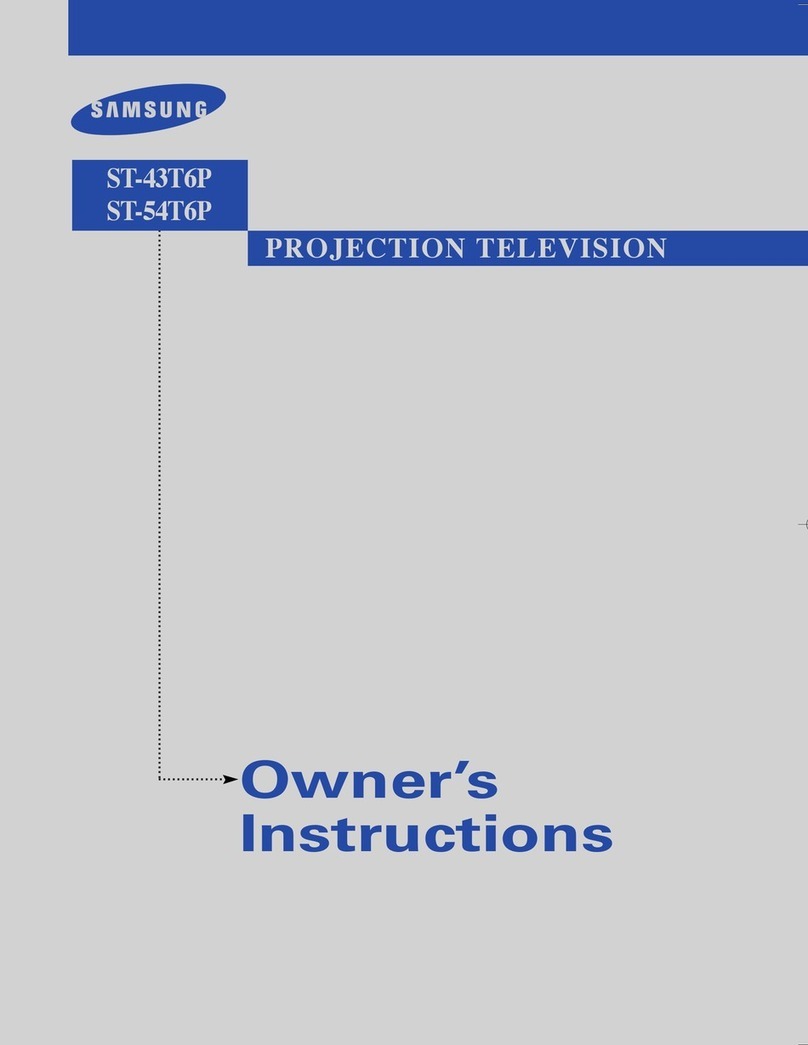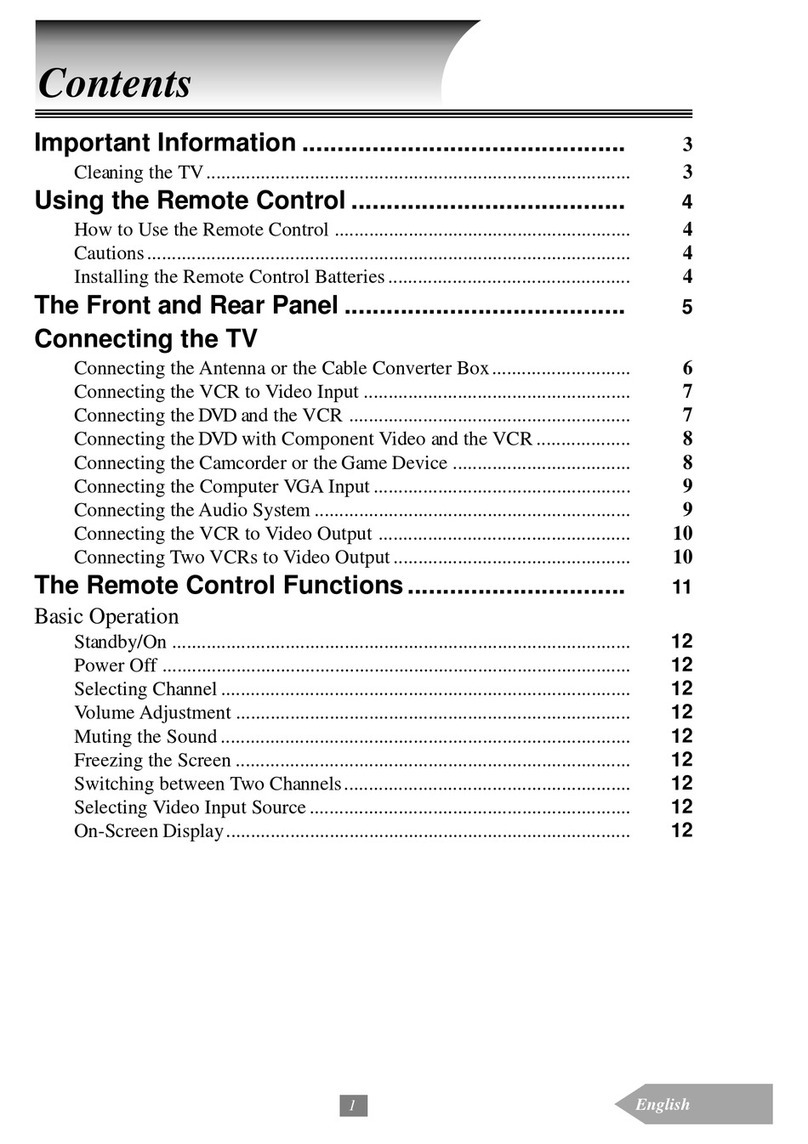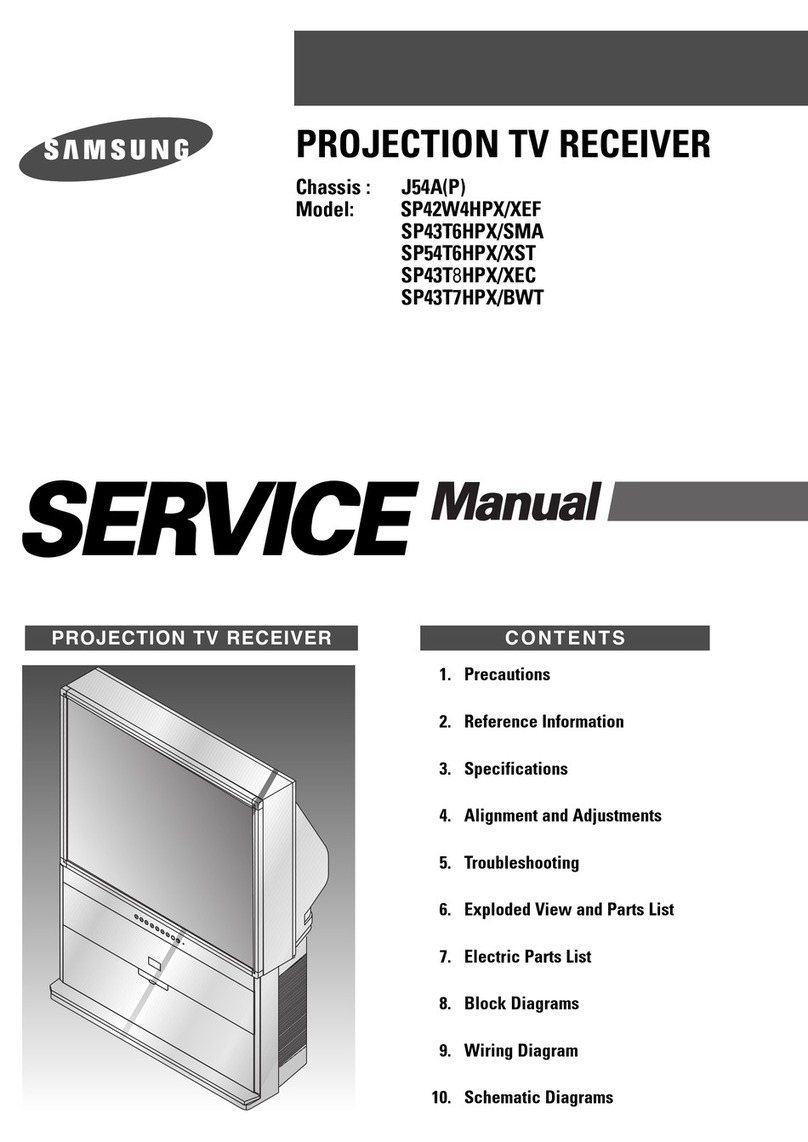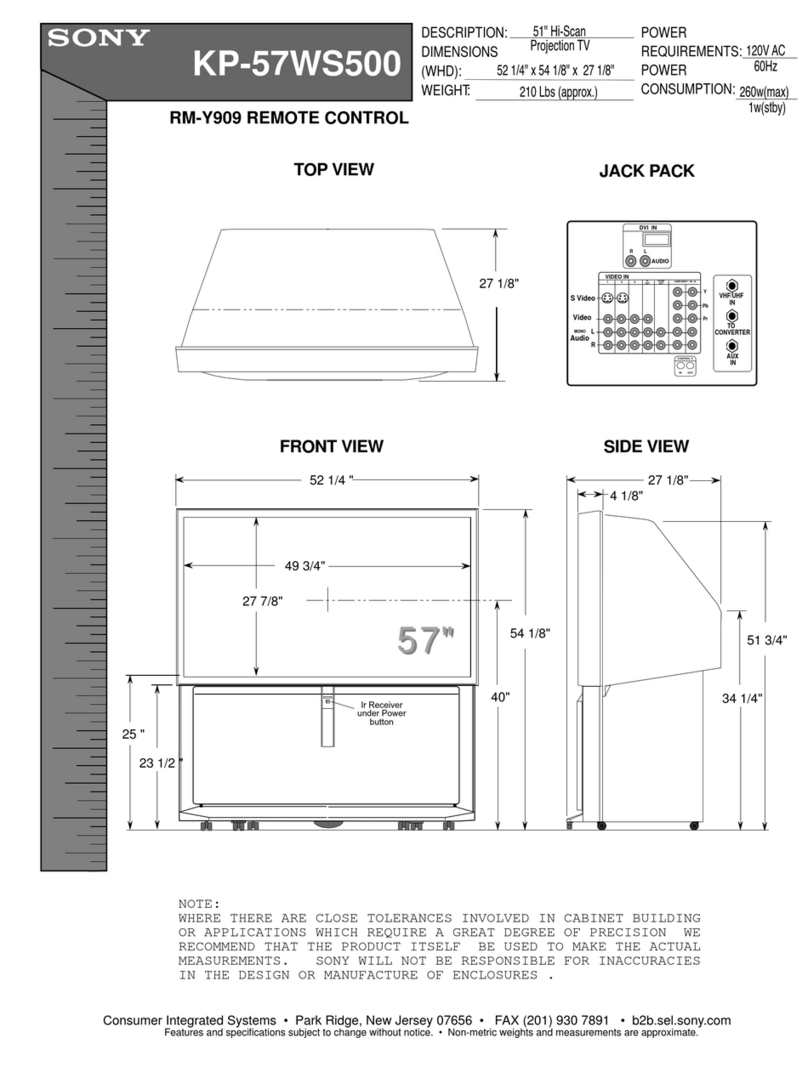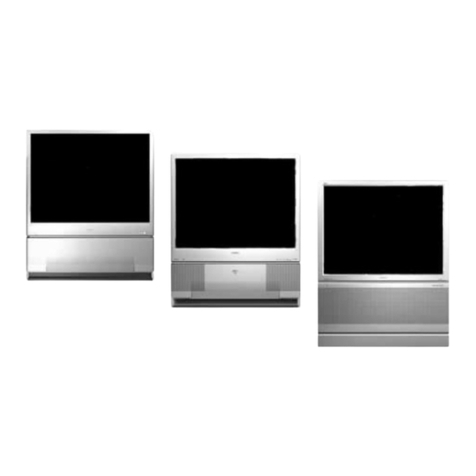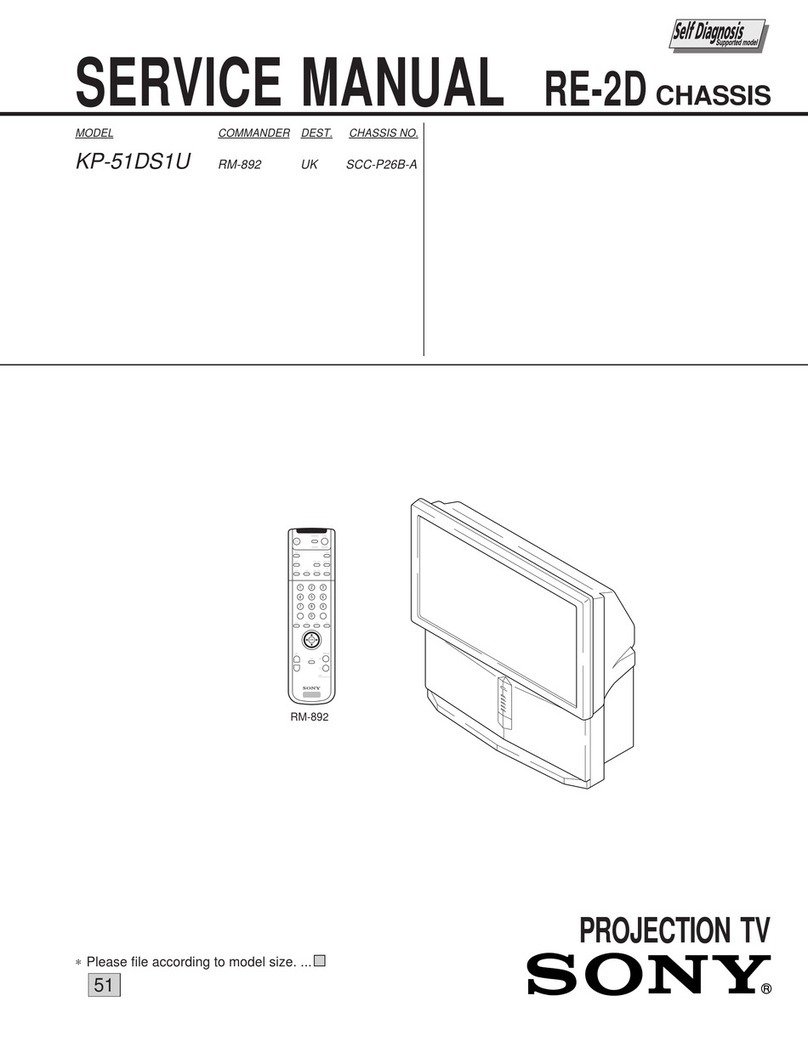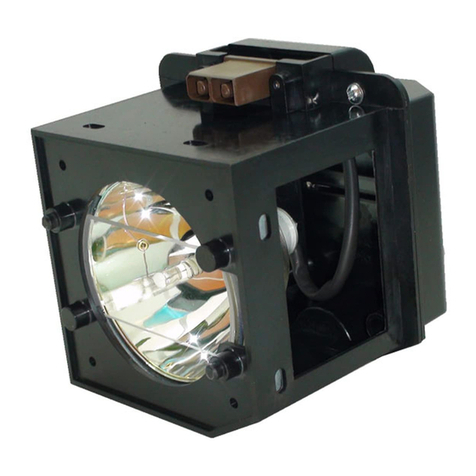
DP-4X GENERIC POWER SUPPLY SHUTDOWN EXPLANATION
PAGE 01-02
GENERAL INFORMATION:
This explains the Overall Power Supply Shutdown Circuits:
Which turns off the Relay Driver for the Deflection Power Supply and the Relay for the Signal Power Supply.
DEFLECTION (High Voltage) POWER SUPPLY:
The Deflection Power supply is centered around the Switching Transformer TP01 and the driver IC, IP01.
This power supply creates voltages that are Switched on when the Set is turned on.
1. SW +115V 2. +220V
3. +28V 4. SW-28V
5. +7V 6. SW +6.3V
Other supplies are generated from these 6 main voltages.
SIGNAL (Low Voltage) POWER SUPPLY:
The Signal Power supply is centered around the Switching Transformer T201 and the driver IC, I201.
This power supply creates voltages that are Switched on when the Set is turned on.
1. 38.5V or 29V 2. +10.5V
3. +21V 4. SW-5.6V
5. +16V 6. SW +5.7V
Other supplies are generated from these 6 main voltages.
Q204 and Q203 Relay Inhibit Activation. (SHUTDOWN) called COMMON ACTION CIRCUIT.
All Shutdown events will cause the main power relays to turn off. This action will stop all secondary power supplies.
The Low Voltage power supply (Stand-By) will Shutdown along with the Deflection Power Supply.
See the DP-4X Signal Power Supply Shutdown Circuit for details.
If any of the shutdown circuits activate, the base of Q203 will go High. This turns on Q203 and removes the Power On Highs
from PPS1 connector pins 9(Power_Sig) and 11 (Power_Def) called Power_1 and Power_3. With this, the main power sup-
plies will STOP. Q204 operates as a “latch”. This prevents Q203 from turning off if the shutdown signal disappears after
shutdown.
SOME SHUTDOWN CIRCUITS ARE DEFEATED IN STANDBY MODE. (Set Off).
When the set is turned off (called Stand By), some of the shutdown inputs are not active because the voltages being monitored
are not on.
•Shorted FAN +10V (from from pin 3of IC303). This voltage is monitored by D313.
•Stopped Fans PPF2 and PPF3 pin 2. This is monitored by D313.
•Shorted Drv 16.5V (from pin 2of IC301) This voltage is monitored by D312.
•Prot_Drv (from pin 48 of PPS1) This voltage is monitored by D312.
•Prot_OCP (6 shutdown inputs) This voltage is monitored by D944.
1. SW +2.2V (IV01) * 2. SW +3.3V (IY01) * 3. SW +9V (IY07) *
4. VM +220V (QEA8) * 5. SW +6.3V (QP04) ** 6. SW +28V (DP30) **
* See the PROT_OVP and PROT_OCP Shutdown Diagram.
** See the Deflection Power Supply Shutdown Output Circuit Diagram. (Continued on page 3)
Any Positive
B+ Supply
B+
Q1
Shutdown Signal
Voltage
Loss
Detector
Figure 4
VOLTAGE LOSS or SHORT DETECTION
(See Figure 4)
One circuit used is the Voltage Loss Detection cir-
cuit. This is a very simple circuit that detects a loss of
a particular power supply and supplies a Pull-Down
path for the base of a PNP transistor.
This circuit consist of a diode connected by its cath-
ode to a positive B+ power supply. Under normal
conditions, the diode is reversed biases, which keeps
the base of Q1 pulled up, forcing it OFF. However, if
there is a short or excessive load on the B+ line that’s
being monitored, the diode in effect will have a LOW
on its cathode, turning it ON. This will allow a cur-
rent path for the base bias of Q1, which will turn it
ON and generates a Shutdown Signal.

